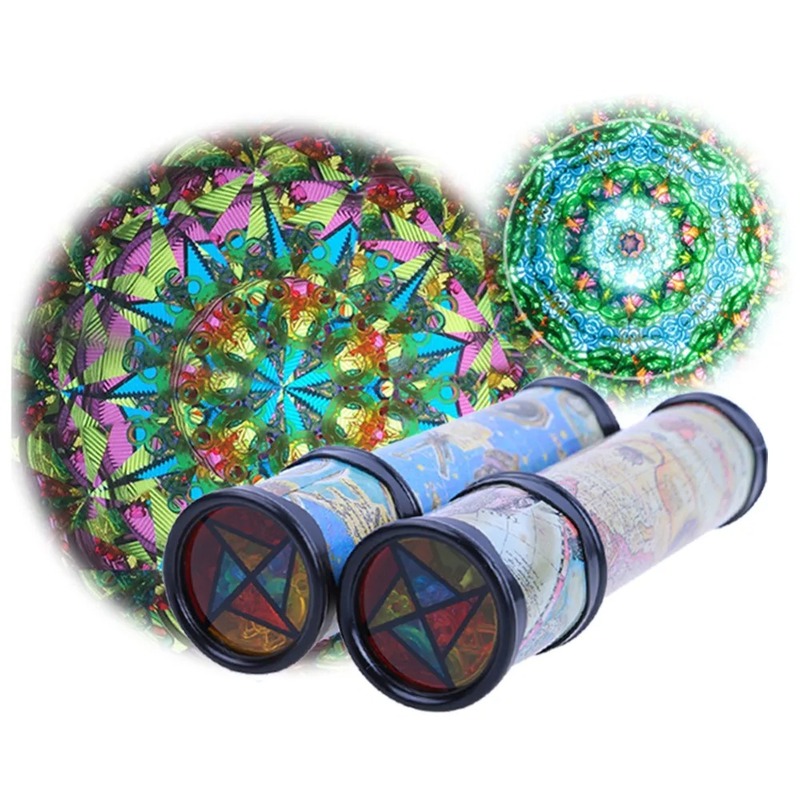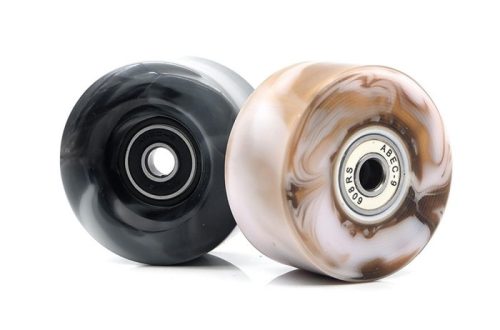The Origins and History of Kaleidoscopes
Delving into the origins of the kaleidoscope takes us back to the early 19th century. This fascinating optical instrument has captivated minds and eyes with its ability to generate symmetrical and colorful patterns.
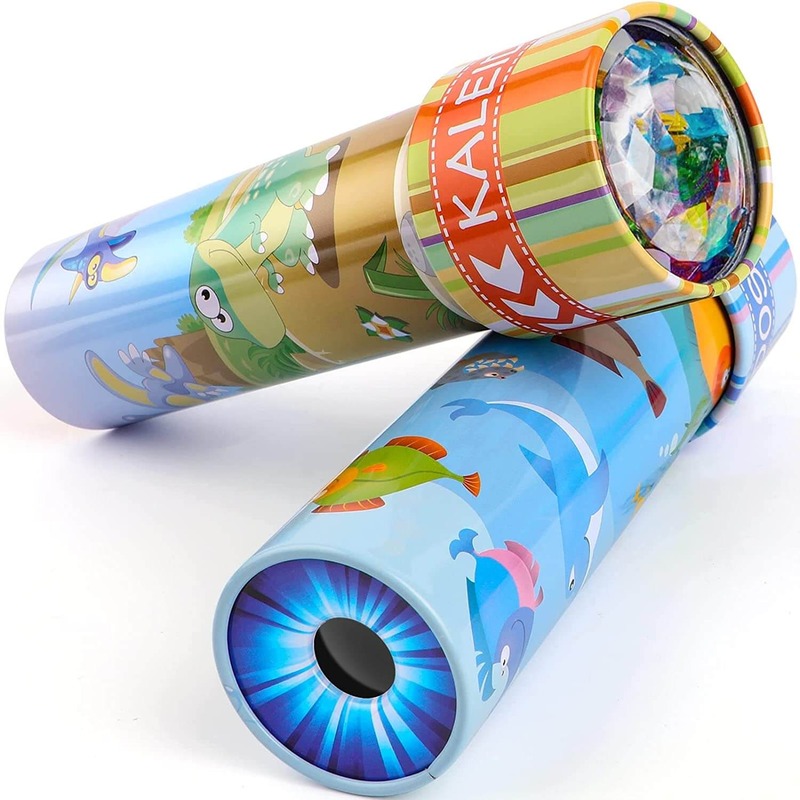
Sir David Brewster: The Inventor of the Kaleidoscope
Sir David Brewster, a Scottish scientist, invented the kaleidoscope in 1816. His curiosity and innovation led to the creation of this mesmerizing optical device. Despite its popularity, Brewster didn’t gain substantial financial benefits due to patent issues. He was nonetheless recognized and knighted for his scientific contributions in 1831. Brewster’s books on kaleidoscopes provide a detailed view of his passion and scientific approach.
From Scottish Innovation to Global Fascination
After its invention by Brewster, the kaleidoscope quickly captivated the global audience. Its simple yet brilliant design allowed people from all walks of life to enjoy the beauty of symmetrical patterns. As these devices spread from Scotland to the rest of the world, they began to signify more than just scientific curiosity; they epitomized Victorian elegance and entertainment. This global admiration marks a significant chapter in the history of optical devices.
Understanding Kaleidoscopes
Understanding how kaleidoscopes create their enchanting visuals is key to appreciating their charm. These devices are simple yet ingenious, using basic principles of reflection to create complex patterns.
How a Kaleidoscope Works: Mirrors and Reflection
At its core, what is a kaleidoscope? It’s an instrument that uses mirrors. These mirrors are positioned at specific angles. They reflect light and color, creating intricate patterns. The patterns multiply as mirrors reflect the same image over and over. Kaleidoscopes have an eyepiece. Through it, viewers see symmetrical patterns formed by bits of colored glass or beads. The magic happens as users turn the kaleidoscope. This changes the view and creates new designs. Each turn brings a unique visual experience to life.
The Meaning Behind the Name ‘Kaleidoscope’
The name ‘kaleidoscope’ has a poetic origin. It comes from Greek words. ‘Kalos’ for beautiful, ‘eidos’ for form, and ‘scopos’ for watcher. The name perfectly captures the essence of what a kaleidoscope offers. They are devices that let us watch beautiful forms. The way kaleidoscopes blend art and science is truly unique. They show us that beauty can be found in symmetry and color. Surgeons once used them to refine their visual skills. Now, they delight people of all ages with their endless variety of patterns.
The Evolution of Kaleidoscope Designs
The design and popularity of kaleidoscopes have significantly evolved over the years, mirroring changes in society and technology. From simple optical toys to intricate art pieces, let’s explore how these captivating devices have transformed.
The First Kaleidoscopes: A Simple Optical Toy
The journey of the kaleidoscope began in the early 19th century. Sir David Brewster, its inventor, initially crafted a tube filled with loose bits of colored glass and other small objects. These early versions were straightforward. Mirrors or lenses inside the tube created the mesmerizing patterns. They quickly became popular as intriguing optical toys that fascinated both adults and children.
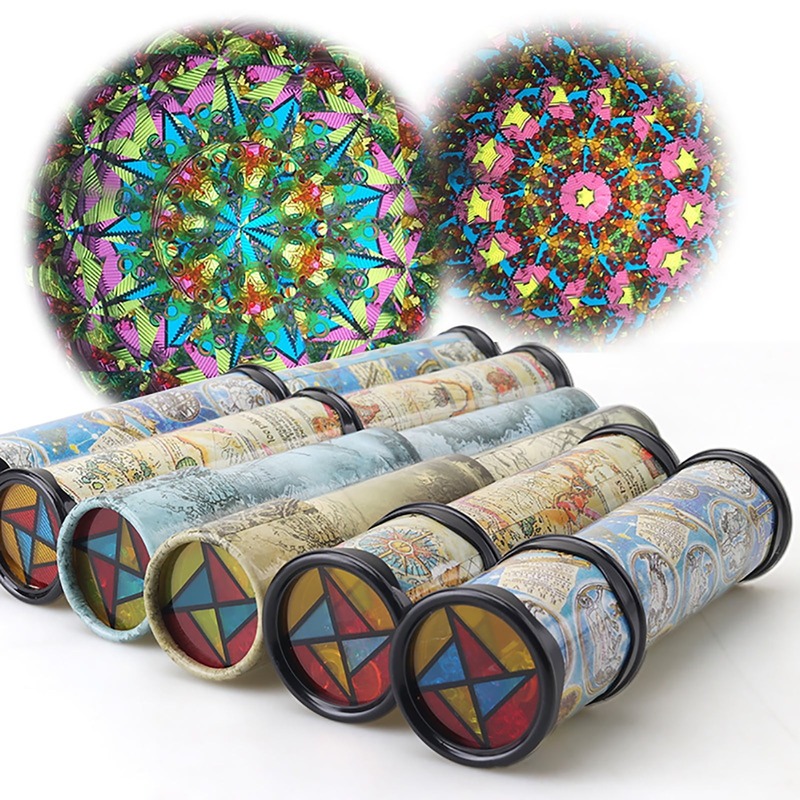
Charles Bush and the Mass Marketing of Kaleidoscopes
The kaleidoscope saw a commercial resurgence in the 1870s thanks to Charles Bush. He was an American entrepreneur who recognized the potential of these devices. Bush standardized their production and was the first to mass market them, making kaleidoscopes accessible to a wider audience. His efforts ensured that kaleidoscopes weren’t just scientific instruments but also popular household items.
The Victorian Kaleidoscope Craze
During the Victorian era, the kaleidoscope became a symbol of elegance and entertainment in sophisticated circles. Known for their love of ornate and novel items, Victorians embraced these devices with enthusiasm. Parlour scopes, often elaborate and beautifully crafted, became common in homes, providing a source of fascination and delight during social gatherings. This period marked the peak of kaleidoscope popularity before the advent of electronic entertainment began to overshadow these analog wonders.
Kaleidoscopes in the Modern Era
The modern era brought new life to kaleidoscopes. Once a child’s toy, they now shine as art.
From Children’s Play to Artistic Resurgence
In the mid-1900s, kaleidoscopes were mostly kids’ playthings. They were simple but fun. Yet, by the 1970s, something changed. Adults rediscovered the allure of kaleidoscopes. Now, they were not just toys. They became art. Craftsmen made kaleidoscopes with skill and new techniques. Glass, mirrors, and materials improved. Kaleidoscopes became more than a pastime. They turned into collectibles, with designs to awe any age.
The Role of Cozy Baker and the Kaleidoscope Renaissance
One person helped bring kaleidoscopes back. Her name was Cozy Baker. She loved kaleidoscopes deeply. She wrote books and shared her passion. Cozy curated the first-ever kaleidoscope exhibition. This sparked the ‘Kaleidoscope Renaissance’. People saw kaleidoscopes differently. Artists created, collectors sought, and fans marveled. Cozy’s work made sure kaleidoscopes got the spotlight they deserved.
Experiencing Kaleidoscopes Today
The world of kaleidoscopes continues to enchant us in modern times. Their vivid patterns and spellbinding symmetry still capture hearts. Museums and exhibitions worldwide showcase these optical wonders, demonstrating their timeless allure.
Kaleidoscopes at Camera Obscura and Other Exhibitions
At places like Camera Obscura, kaleidoscopes take center stage. These venues often feature giant kaleidospheres. They create mesmerizing patterns with mirrors, lights, and colored patters. Not just exhibitions, many go beyond. They include hands-on experiences where guests can engage with kaleidoscopic visuals. Interactive installations are common. They allow people to create their own patterns and appreciate the kaleidoscope’s magic firsthand.
Interactive Kaleidoscopes and Modern-Day Enjoyment
Today’s kaleidoscopes are not just for display. Many are interactive. They come in all shapes and sizes. Some are large installations in public spaces. Others are smaller, personal scopes. They all offer a chance to play and explore symmetrical designs. Workshops and educational programs use them to teach about light, reflection, and geometry. They are tools for creativity and learning. Interactive kaleidoscopes bridge the gap between art and science, providing enjoyment for all ages.
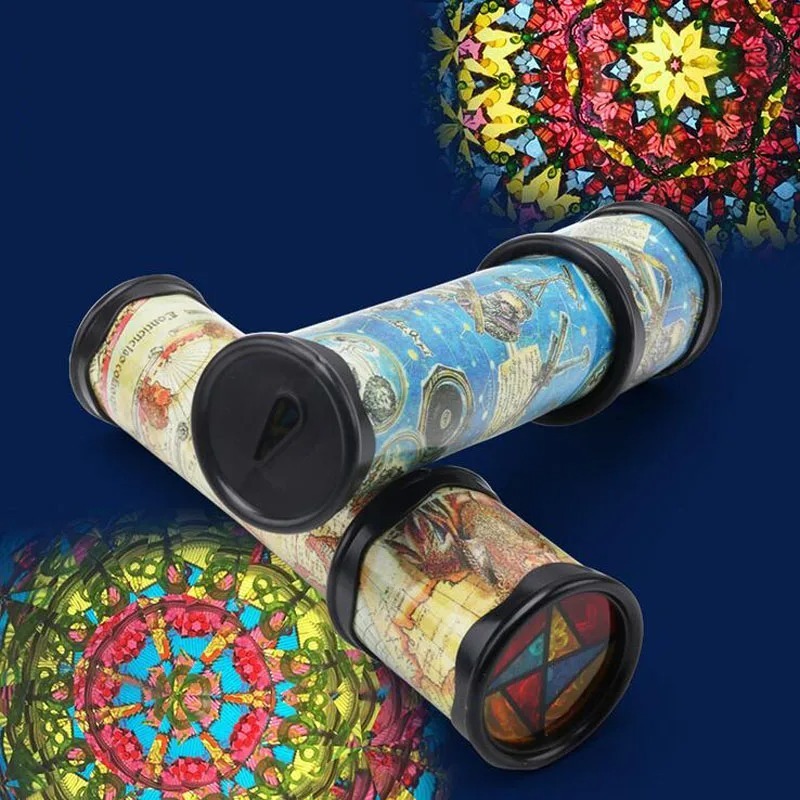
Crafting Your Own Kaleidoscope
Creating your own kaleidoscope can be a delightful and educational project. It allows you to explore the principles of reflection and symmetry firsthand. Moreover, it’s a fantastic activity for both children and adults, providing an avenue for creativity and experimentation.
DIY: The Basics of Making a Kaleidoscope at Home
Making a kaleidoscope at home is easier than you might think. You’ll need a few basic materials, which include a cardboard tube, reflective material like mirrors or shiny aluminum foil, and some clear plastic for the viewing end. Start by securing the reflective material inside the tube to form a triangular shape. Next, fill one end with colorful beads or pieces of glass, securely closing it with the clear plastic. As you look through the other end and rotate the tube, you’ll see the beautiful and ever-changing patterns typical of a kaleidoscope.
Creative Ideas for Personalized Kaleidoscope Designs
Once you’ve mastered the basic kaleidoscope, why not get creative with your designs? Consider using different materials for the casing, such as bamboo or decorated paper tubes, to give your kaleidoscope a unique look. You can also vary the objects inside—try using sequins, small feathers, or even liquid with glitter to alter the visual effects. Personalizing your kaleidoscope not only makes it special but also enhances the fun of creating and viewing your spectacular visual designs.
